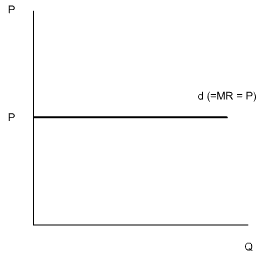Edited, memorised or added to reading queue
on 02-Dec-2016 (Fri)
Do you want BuboFlash to help you learning these things? Click here to log in or create user.
| status | not read | reprioritisations | ||
|---|---|---|---|---|
| last reprioritisation on | suggested re-reading day | |||
| started reading on | finished reading on |
| status | not read | reprioritisations | ||
|---|---|---|---|---|
| last reprioritisation on | suggested re-reading day | |||
| started reading on | finished reading on |
Indefinite Finance
While a definitely optimistic future would need engineers to design underwater cities and settlements in space, an indefinitely optimistic future calls for more bankers and lawyers. Finance epitomizes indefinite thinking because it’s the only way to make money when you have no idea how to create wealth. If they don’t go to law school, bright college graduates head to Wall Street precisely because they have no real plan for their careers. And once they arrive at Goldman, they find that even inside finance, everything is indefinite. It’s still optimistic—you wouldn’t play in the markets if you expected to lose—but the fundamental tenet is that the market is random; you can’t know anything specific or substantive; diversification becomes supremely important. The indefiniteness of finance can be bizarre. Think about what happens when successful entrepreneurs sell their company. What do they do with the money? In a financialized world, it un
| status | not read | reprioritisations | ||
|---|---|---|---|---|
| last reprioritisation on | suggested re-reading day | |||
| started reading on | finished reading on |
Indefinite Finance
sification becomes supremely important. The indefiniteness of finance can be bizarre. Think about what happens when successful entrepreneurs sell their company. What do they do with the money? In a financialized world, it unfolds like this: • <span>The founders don’t know what to do with it, so they give it to a large bank. • The bankers don’t know what to do with it, so they diversify by spreading it across a portfolio of institutional investors. • Institutional investors don’t know what to do with their managed capital, so they diversify by amassing a portfolio of stocks. • Companies try to increase their share price by generating free cash flows. If they do, they issue dividends or buy back shares and the cycle repeats. At no point does anyone in the chain know what to do with money in the real economy. But in an indefinite world, people actually prefer unlimited optionality; money is more valuable than anything you could possibly do with it. Only in a definite future is money a means to an end, not the end itself.<span><body><html>
| status | not read | reprioritisations | ||
|---|---|---|---|---|
| last reprioritisation on | suggested re-reading day | |||
| started reading on | finished reading on |
HOW TO FIND SECRETS
around us; to find them, one must study some undiscovered aspect of the physical world. Secrets about people are different: they are things that people don’t know about themselves or things they hide because they don’t want others to know. So <span>when thinking about what kind of company to build, there are two distinct questions to ask: What secrets is nature not telling you? What secrets are people not telling you? It’s easy to assume that natural secrets are the most important: the people who look for them can sound intimidatingly authoritative. This is why physics PhDs are notoriously difficult
| status | not read | reprioritisations | ||
|---|---|---|---|---|
| last reprioritisation on | suggested re-reading day | |||
| started reading on | finished reading on |
HOW TO FIND SECRETS
ral, empirical way: do a quantitative study of corporate profits and you’ll see they’re eliminated by competition. But you could also take the human approach and ask: what are people running companies not allowed to say? You would notice that <span>monopolists downplay their monopoly status to avoid scrutiny, while competitive firms strategically exaggerate their uniqueness. The differences between firms only seem small on the surface; in fact, they are enormous. The best place to look for secrets is where no one else is looking. Most people think only in terms of what they’ve been taught; schooling itself aims to impart conventional wisdom. So
| status | not read | reprioritisations | ||
|---|---|---|---|---|
| last reprioritisation on | suggested re-reading day | |||
| started reading on | finished reading on |
| status | not read | reprioritisations | ||
|---|---|---|---|---|
| last reprioritisation on | suggested re-reading day | |||
| started reading on | finished reading on |
| status | not read | reprioritisations | ||
|---|---|---|---|---|
| last reprioritisation on | suggested re-reading day | |||
| started reading on | finished reading on |
| status | not read | reprioritisations | ||
|---|---|---|---|---|
| last reprioritisation on | suggested re-reading day | |||
| started reading on | finished reading on |
